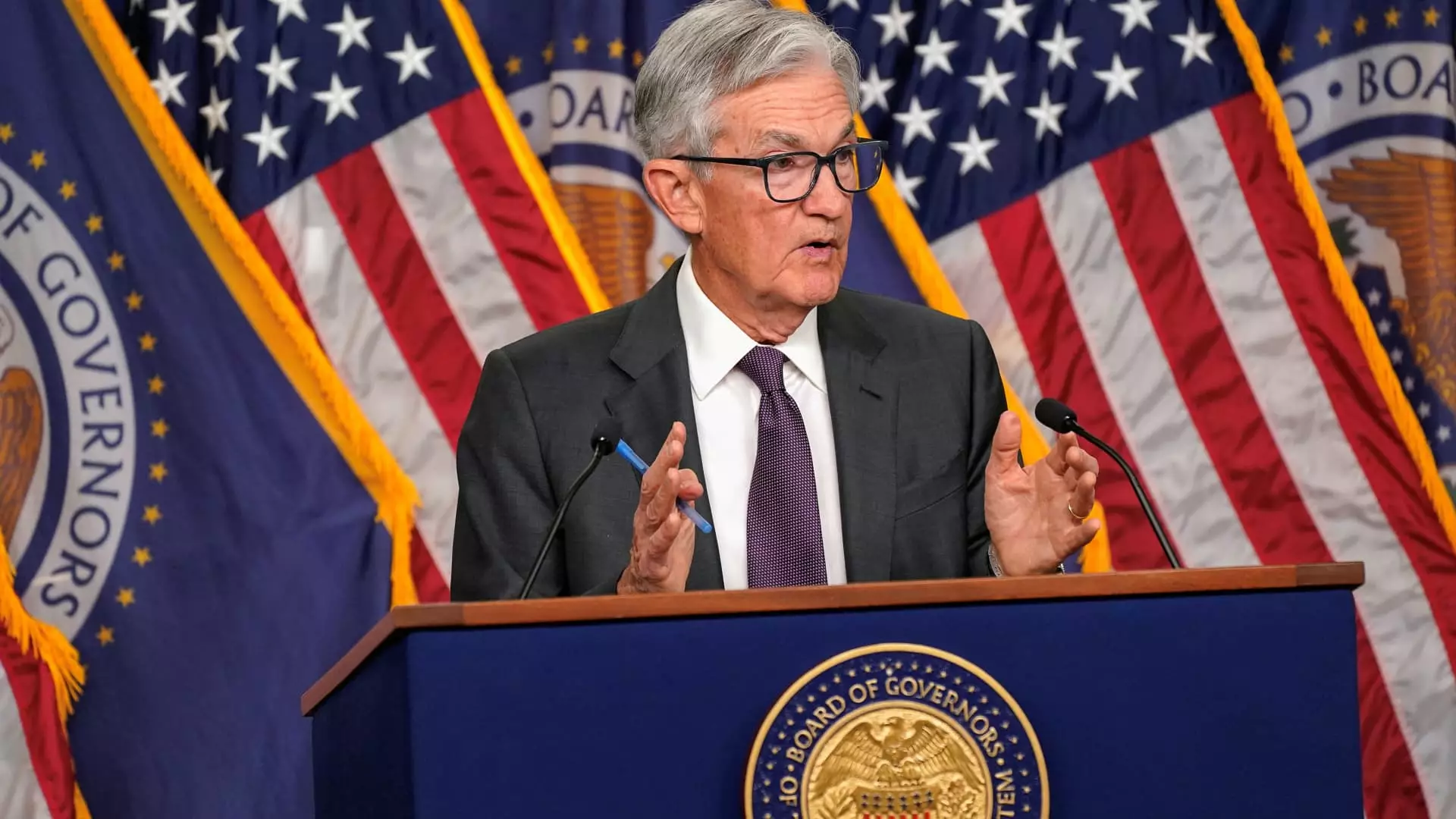On a pivotal Wednesday in Washington, the Federal Reserve (the Fed) decided to maintain its benchmark interest rates in a tightly controlled range of 4.25%-4.5%. While many economists had predicted this steady posture, the echoes of uncertainty emanating from both the domestic and global economic landscapes were impossible to ignore. This decision, rather than just a simple hold on rates, embodies the Fed’s careful balancing act amid looming tariffs and an uncertain economic future. Current market sentiments had effectively discounted the probability of any shift in policy at this meeting, leaving investors on edge as they awaited the Fed’s guidance.
The Fed’s cautious approach signals an increased awareness of the complexities posed by President Trump’s tariffs, which have already begun to sow discord within the broader economy. Such policy maneuvers seem designed to promote short-term gains, yet they threaten long-term stability as trade tensions escalate and consumer confidence wavers. It appears that the Fed is opting for a strategy of precautious policy rather than taking bolder, necessary actions.
Tariffs: An Invisible Hand on the Economy
The undeniable presence of tariffs in the decision-making process of the Fed cannot be overstated. It has become a double-edged sword that may simultaneously stoke inflation and stifle growth. Federal Reserve Chair Jerome Powell’s caution in addressing the potential impacts of these tariffs underscores the gravity of the situation. Every increase imposed harbors the potential to disrupt various sectors of the economy, yet Trump’s administration continues to press forward with its aggressive tariff strategy.
The tariffs are, quite frankly, imprudent. Economic stability thrives in collaboration and interconnectedness, yet these self-imposed barriers threaten the principles of free trade and may hinder the economy’s potential growth trajectory. Inflation rates are creeping upwards, which can drastically reduce consumers’ purchasing power. One must wonder: at what cost does this push for protectionism come? It becomes increasingly clear that an introspective reevaluation of our trade strategies is urgently needed.
Inflation on the Rise: A Reality Check for Consumers
Amidst such economic turbulence, one might find it astounding that inflation projections have risen to a concerning 2.8% annual pace—a noteworthy uptick that reflects a substantial shift in the Fed’s assessment of price stability. As inflation expectations escalate amongst the populace, one cannot help but ponder how this affects everyday consumers. The so-called moderation in consumer spending indicates a growing apprehension among households that inflation may erode their purchasing power. What we are witnessing is a tightrope walk between thrift and expenditure—the latter becoming increasingly risky.
The Fed’s move to adjust bond holdings presents another intriguing dynamic. With a reduction from $25 billion to merely $5 billion in monthly Treasury proceeds, such decisions illustrate the Fed’s hesitation amid ambiguity. This carries implications for future monetary policies and the economy’s overall vitality. It seems that the Fed’s primary goal of maintaining price stability is being challenged more than ever. Consumers find themselves trapped in a landscape of mounting uncertainty, as inflation becomes a harsh reality.
Market Response: A Brief Respite Amid Uncertainty
Interestingly, the Dow Jones Industrial Average surged more than 400 points following the announcement, as market participants took solace in the Fed’s predictions of potential future rate cuts. However, it would be folly to assume this is a clear-cut sign of stability. The transient nature of market responses often betrays deeper concerns. This optimism appears precariously perched upon the Fed’s intent to entertain a cautious approach through future rate reductions, but it remains shrouded in clouded predictions.
This alteration in sentiment does not signify a return to unbridled growth; instead, it reveals a market grappling for hope among chaos. The aftermath of tariff policies continues to cast a long shadow over Wall Street, as uncertainty breeds volatility. Can we truly place our faith in a system that appears beholden to momentary fluctuations rather than sustained growth?
The Road Ahead: Navigating Uncharted Waters
The interplay between interest rates, inflation, and economic optimism is certainly complex. Fed officials forecasting two additional rate cuts by the end of the year establishes a precarious path forward, particularly given the subdued growth expectation of only 1.7% for this year—a downgrading that can’t help but send chills down the spine of investors.
We find ourselves at a crossroads, as the Fed appears increasingly hawkish, indicating a precarious balance between economic growth and inflation control. The desire for stability is palpable, yet the uncertainty clouds the horizon. The economic climate, characterized by growing scepticism from consumers and investors alike, demands a new approach that emphasizes holistic solutions rather than the piecemeal tactics we have become accustomed to in recent times. The question remains: will policymakers sidestep meaningful change for the sake of short-term gains, or do they have the courage to champion a more progressive agenda? The stakes couldn’t be higher, and the answer eludes us amid a sea of economic fog.

